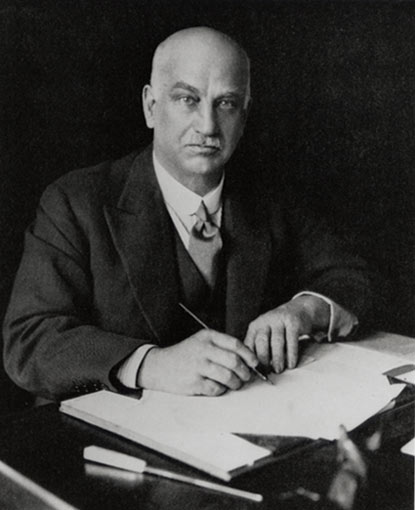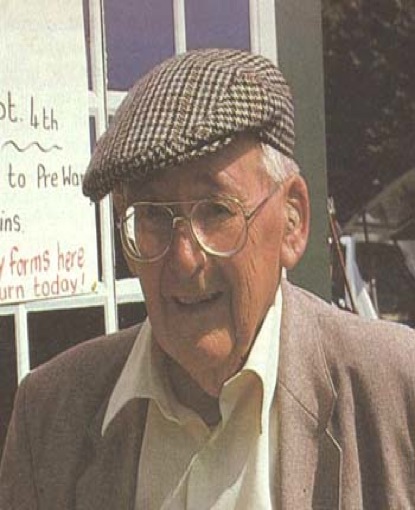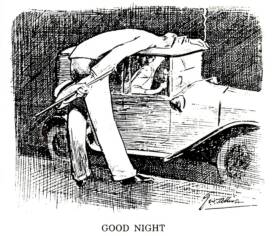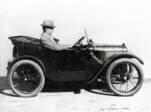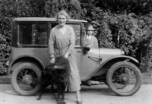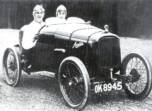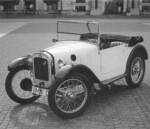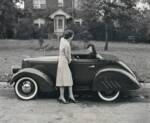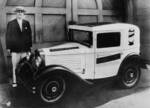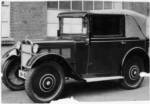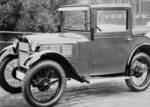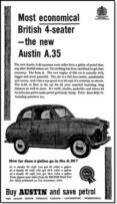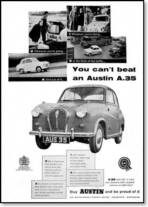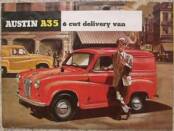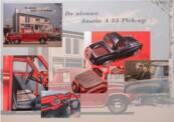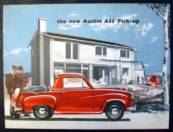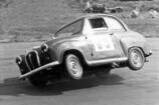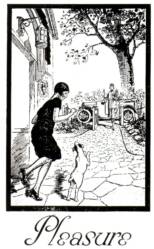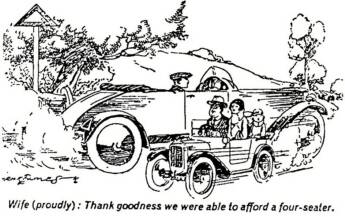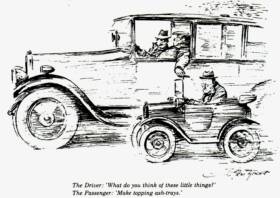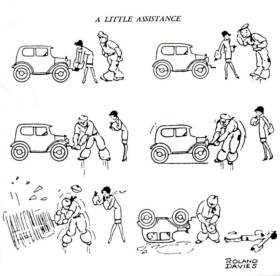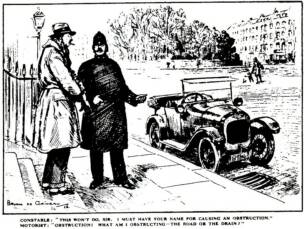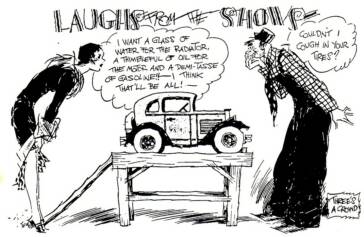History of the Austin 7
a.k.a. the "Baby Austin"
"Perfect freedom is reserved for the man who lives by his own work and in that work does what he wants to do"
R. G. Collingwood
Sir Herbert Austin
1866 - 1941
Stanley Edge
1903 - 1990
Using the advanced draughting & in depth mechanical skills of the largely unlauded Stanley Edge, work began on the drawings for what would become the iconic Austin 7. Edge had left school at 14 to work in the drawing office of the Austin Motor Co. & had so greatly impressed Austin that he was asked, at the tender age of 17, to live at Austin's house, Lickey Grange, & work on the drawings on the billiard table, being directly paid from Austin's own pocket. Edge designed the motor (loosely based on French four cylinder cars of the time) & transmission & worked with Austin on other parts of the overall design. In 1922, when Austin approached the other directors of his company with his plans for the Austin 7, he was treated with derision at this tiny car, however he tenaciously went on to get it produced ,with the first prototypes appearing in that year as well as the first ones going on sale at £225 - making it affordable for those who had never previously owned a car. The "Baby" (as it was nicknamed) became one of the most popular cars ever produced for the British market (& also sold well abroad) & had deletorous effects on most other British small cars & cyclecars of the 1920's - it became Britain's answer to the Model T.
The standard Austin 7, with 40 mpg fuel economy & top speed of around 40 mph, was the go-anywhere car. With it's large skinny wheels, lightweight 425 kg body (2.8m long x 1.17m wide for the earlier models, a tad longer for the later ones), small 747cc motor, & high power to weight ratio it went on to compete successfully (with over 200 wins) in a lot of different motor racing events - being particularly successful in hillclimb races against far more expensive & powerful cars. In 1932 a supercharged, lowered version set a Class H record of 102 miles per hour, and Austin sevens took first place in around over 200 hill climb, touring, and other races. Also, because of their cheapness & simplicity, many of them were converted into "Specials" with an astounding variety of body shapes.
290,000 Austin 7's were produced between in the UK from 1922 to 1939 in a variety of body styles, including vans.
A further 100,000 Austin 7's were produced internationally - under license in Germany, under the Dixi brand (which later became BMW), in France as Rosengart & in the USA by the American Austin Company as Bantam (which went on to produce the first Jeeps.) They were also claimed to be copied, without license, by Nissan/Datsun of Japan.
As the Austin 7 name had become so popular it was also used for the first Austin A30's (in 1951) & the first Austin Minis (in 1959)
Nick Mason, Pink Floyd drummer & car enthusiast, had an Austin 7 "Chummy' as his first car, & Mick Fleetwood, of Fleetwood Mac, shared his love of the wee beasties.
Please note - all images are not my own & have been gathered from the internet to illustrate a small part of the Austin history both in the UK & abroad
But a small part of the history of Austin .....
Herbert Austin, the son of a farmer, was born in Little Missenden, Buckinghamshire, UK. In 1884 he had emigrated to Melbourne, Australia where he worked in diverse engineering enterprises & attended art school to upskill on his drawing. It was in Melbourne that he met his wife, Helen Dron, & they went on to have 3 children - a son & 2 daughters. Soon before his marriage he started work on sheep shearing machines that were being produced for the Wolseley Sheep Shearing Machine Co., which he was later asked to join, & went on to patent his own improvements to them.
In 1893 Austin & his friend Wolseley returned to Birmingham, UK where Wolseley set up his factory, with Austin as manager, producing the sheep shearing machines as well as bicycles in quieter times. In his own time Austin's love of cars grew - he built 2 different cars - one of these, in a modified form was produced & sold by Wolseley in 1900.
Austin left Wolseley's company in 1905, taking some of it's senior staff, to form his own company based out of an old print works in Longbridge, Birmingham. By 1908 they had 17 different models in production & later, with the advent of World War 1, they produced munitions (for which Austin received a knighthood in 1917.) In 1921, with the difficult economic conditions following WW1, the company was on the verge of bankruptcy. It was under these conditions that Austin dreamed up his ambitious plan - to produce an affordable reliable small car to compete with the motorcycle/sidecar combination so popular with the returned servicemen on a tight budget.
.... and a little A35 history ....
It was based on the popular little A30, which, when introduced, was called the "New Austin Seven" & was produced from 1951 - 1956 & was a great competitor to the Morris Minor. The A30 had an 803cc A-series motor & was the first Austin to have a monocoque body. This fully stressed chassis-less body was designed by T. K. Garrett, an ex aeronautical engineer. The monocoque body made it lighter & stiffer than most vehicles of it's time & by the end of it's production 223,264 A30s had been built - as 2 or 4-door saloons, vans or "Countryman" estate vans.
The A35 was launched at Earls Court Motor Show on the 2nd October 1956 & was largely an evolved version of the A30 with quite a few changes made. Mechanically the A-series engine was enlarged to 948cc & 34bhp, shell bearings replaced the white metal bearings, a full flow oil filter replaced the bypass filter, a more precise gear lever was installed & the back axle ratio was raised to cope with the added power. Cosmetically the rear window was made larger & wrap-around, modern fhashing indicators on front & rear replaced the B-pillar wing type flashers, the front grille changed from being fully chromed to painted with a chrome surround, the speedo was recalibrated from 70 to 80mph, the seats newly designed & the roof guttering was changed to run down past the windscreen on each side rather than across the top of it.
Although the A35 was produced in a variety of guises - 2 & 4 door saloons, the very rare pickups (475 only made in '56 & '57), vans & Countryman estate vans - the cars themselves were discontinued in the spring of 1959 with the Countrymans ending in 1962 & the vans continuing on until 1968. The vans had 948cc motors until 1962 when they were given a 1098cc motor & an 848cc version was available alongside it from 1964 onwards. Overall 354,607 A35s were built under varying designations :-
A2S5 - 2 door saloon, AS5 - 4 door saloon - it appears that there were 209,333 saloons made with the large majority being the 2 door version
AV5 - pre 1962 5cwt van
AK5 - pickup
AV6 - Mk 2 vans (1962)
AV8 - post '62 Mk3 1098cc 6cwt vans + 848cc vans
AP5 - '56 - '62 Contryman vans
AP6 - final Countryman vans from March - September 1962
The Austin 7 & the cartoonist ....
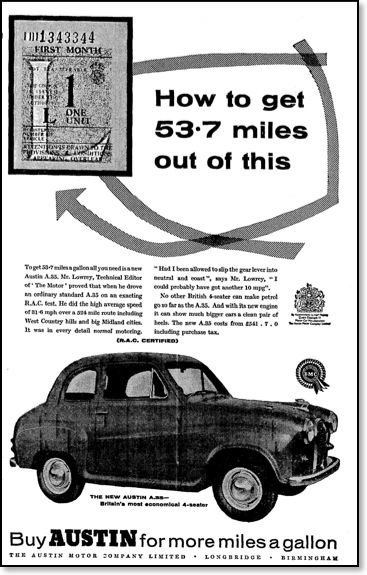
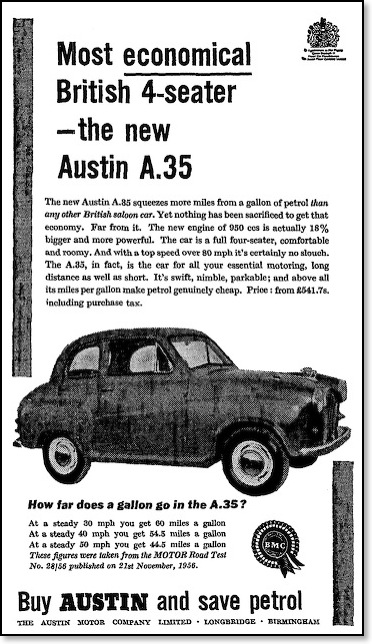
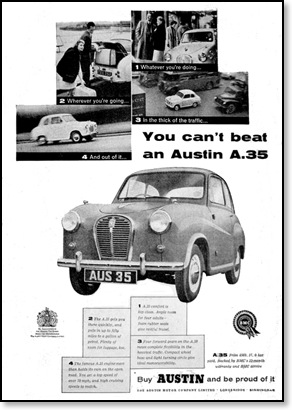
Hire
Cars
History
Austin, 7 & A35
